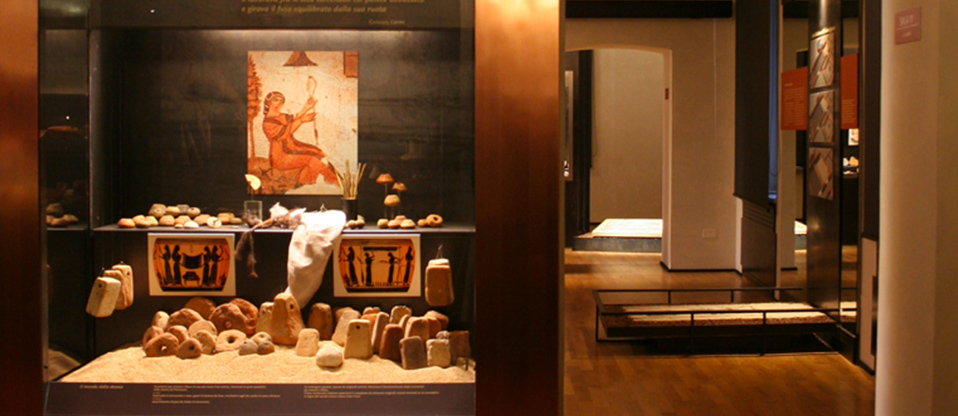Sede operativa: Via Gaetano Donizetti n. 10 80013 Casalnuovo di Napoli (Na) | tel. +39 0818420561 | fax. +390818426308 | info@officinemanganiello.it
Museo Archeologico di Priverno
Built by Priverno Municipality and opened in 1996, the Archaeological Museum of Priverno is located in the historic center of the Lazio town, in Tacconi Square, and is dedicated to Privernum, a Roman colony founded in the late II century B.C. in the Valle d'Amaseno. The Museum, through a path of 13 rooms, tells the story of the colony and recreates the topographical development of the area since the protohistoric and archaic phases. Archaeological finds, coming from various excavations in the area over the centuries, are completed by an effective teaching support that, through photos, texts and drawings, rebuilds landscapes, monuments, and aspects of everyday life. The image that comes out is that of a flourishing city, which had its greatest splendour between the last century of the Republic and the first of the Empire. This also showed by the beautiful mosaics that adorned three sumptuous patrician homes of the end of the II century B.C. The mosaics are documented through photos, luminous and plastic panels and, above all, through the sumptuous floor divided from a prestige room of one of these homes set up in central living room. There are more than 30 square meters of polychrome mosaic decorated with perspective ceiling coffer motif and embellished by a long mosaic that illustrates a landscape along the Nile. The life that took place in the rich houses of the Privernati people is rebuilt, at the Museum, through materials of daily life: kitchenware and tableware, amphorae, oil lamps, castings, frames and a whole series of delicate maquillage objects open a bracket on the customs and traditions of ancient citizens. Recently reopened to the public in the new headquarters of the prestigious Valeriani Guarini Antonelli Palace, the new Archaeological Museum uses an original and innovative set-up, located inside a historic building whose facade is magnificently decorated with graffito technique. The interiors are embellished by a late Liberty pictorial cycle made in the 1920s by artists from the Roman environment. The narration is strictly scientific but also, at times, evocative and deliberately spectacular, it witnesses the public and private life of the inhabitants of the city. In the already rich section dedicated to everyday life, we have added a section dedicated to women, to their daily work in the house, especially the weaving, and the care of the person, realized with the help of so many small artifacts that remind us very much of the objects we are using today.
























